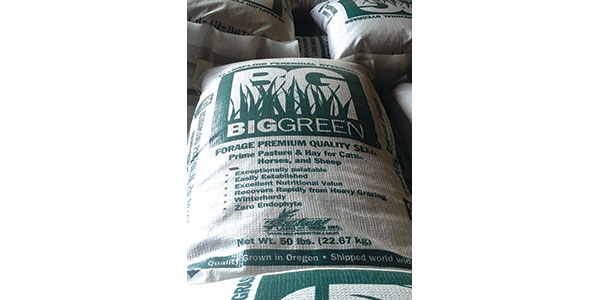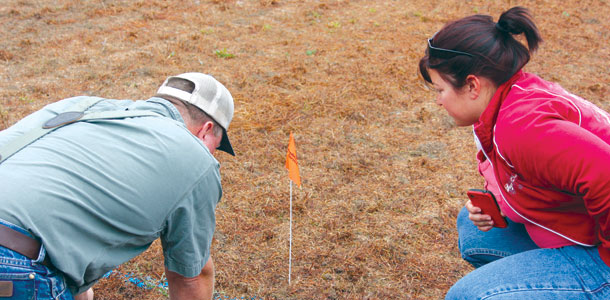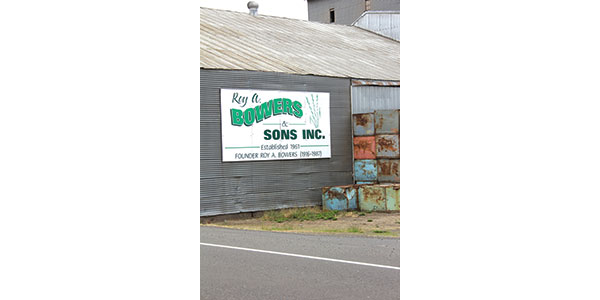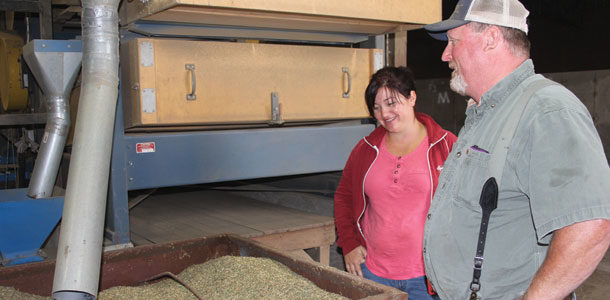Growers don’t trust the claims touted for newer varieties; they tried a new variety once but were disappointed and now are suspicious of the hype. How are growers supposed to discern what constitutes a valid sales pitch?
Risa DeMasi of Grassland Oregon, a research and distribution seed company in Oregon’s Willamette Valley, says growers should do their homework when it comes to choosing grass and alfalfa seeds.
“There’s a lot of good information out there about improved varieties, and with research, producers can know the difference between something that’s branded but is a common ‘cornflakes’ variety with new packaging and knowing a variety that truly has had some work done on it and has improved beneficial traits that really could take them to the next level on their farm,” DeMasi says.
Fourth-generation grass seed producer Eric Bowers, of Bashaw Land and Seed Inc. in Harrisburg, Oregon, would agree and offers Kentucky 31 tall fescue seed as an example.
Kentucky 31 was identified in 1931 and released in 1943 as a hardy and economical forage grass. Bowers says for years the industry has researched and introduced better varieties than Kentucky 31 and tried to convince growers to embrace the new varieties. “To me, it has nothing to do with what quality feed it is.
It all has to do with the fact that everybody knows Kentucky 31. It’s been around forever. You can’t convince them. So the Willamette Valley seed producers didn’t start growing it until about the last 10 years, deciding ‘if we can’t convince them, then we might as well grow what they want.’ You know farmers; we’re all kind of stubborn and are set in our ways.”
Seed researchers agree it’s an uphill battle to introduce newer varieties and getting the information to the growers is challenging.
DeMasi says the seed industry has great research going on and some expert people evaluating and breeding new varieties, but breaking down the science from the researchers’ minds to get it into the hands of growers where it can be useful is fraught with obstacles. It quickly becomes clear that for forages to advance, growers must lead the change.
In order to lead the change, growers are faced with the daunting task of wading through research trials, advertising claims and testimonials to figure out which forage seed to use. To investigate a new grass variety, DeMasi suggests beginning with the end in mind:
1. Ask yourself what kind of livestock you will be feeding. Digestive systems (ruminants and non-ruminants) are different and require different grass types.
2. Determine your soil type.
3. Pin down your management style. Will you strip graze? Use high-density stocking rates? Open-pasture graze?
4. Is your pasture irrigated or non-irrigated? What’s your climate?
5. Is your goal yield or nutritional value, and which is most important to you?
After these questions are addressed, DeMasi suggests growers go to their computers and search for research trials in their regions. Land-grant universities, seed companies, private industry and private universities conduct and publish research trials constantly.
DeMasi recommends investigating how the trial was conducted – was the focus on yield or nutritional value, persistence, germination rates, pest resistance or drought resistance? Trials are conducted for all kinds of reasons, and it’s important to understand these specifics in order to determine the relevance of the data to your specific needs.
DeMasi states new seed varieties can take 10 to 15 years before being made commercially available, so research shouldn’t be hard to find if the claims are viable.
From a research standpoint, some of the exciting research currently being conducted involves grasses with high levels of water-soluble carbohydrates, which make ruminant animals’ systems much more efficient and better able to utilize the nutrients. The byproducts of the plants are also more valuable due to high energy levels in the plant.
A lot of recent research has involved advancing high-sugar plants. This germplasm has been available in Europe for several years, but research is now bringing it to the U.S. DeMasi says the challenge has been helping growers find the distribution channels for it.
In addition to researching new varieties, growers are also faced with the decision of whether to buy certified seed, uncertified seed or variety not stated (VNS). Certified seed must meet minimum purity and germination levels, and fields must meet isolation and crop history requirements. They must also be inspected by officials to ensure genetic purity – all of which adds to the cost of production.
Bowers says to achieve that purity, a perennial ryegrass plant, for instance, on one side of the fence can be a weed but conversely be a crop on the other side of the fence.
To maintain the purity, growers used to burn the stubble, but in Oregon, growers lost that right about four or five years ago. Bower says, “Now, we either burndown with Roundup or go back directly without a burndown, depending on whether we get a rain or not, and use no-till.
But sometimes that’s not always going to get the best yield because of competition. Sometimes the better yields are achieved by plowing, disking, harrowing, rolling and starting all over.” If a field is too rough, he full-farms it and levels it. If it has a lot of weeds, he full-farms that, treats it and gets a good seed bed, then uses Nortron, which works on bare soil.
Bowers has grown mostly common varieties of tall fescue, Gulf annual ryegrass and perennial ryegrass for the open markets.
He’s also grown his own proprietary varieties such as Big Green (a tetraploid perennial ryegrass), as well as some specialty grasses like Lone Star, which is a proprietary variety for Grassland Oregon. About 15 to 20 percent of his acreage is contracted to proprietary seed, mostly turf varieties.
Of his Big Green variety, Bowers says, “There’s been years I can’t sell it, and then there’s years like the last three years – before I can hardly get it in a bag, it’s sold.
And usually the perennial tetraploids go up into Wisconsin, for instance, or the Northeast for the dairy farms and small cattle ranches in that part of the world, where it’s a little milder climate. It’s a real small niche market.”
European gray garden slugs are another problem growers face in the Willamette Valley, which ultimately contributes to the cost of producing grass seed. Bower says, “They’ve got an appetite like – I swear they should look like Hereford steers.
Last year in 185 acres we lost 60 acres to them – bare ground. And there’s nothing to kill them with. The only thing there is, is bait – and it only works if it’s dry – but what does it do in Oregon in the wintertime? It rains.” Bowers uses rotations of meadowfoam to help reduce slug populations.
The expense associated with purchasing an improved variety plays a bigger part of the decision-making process than DeMasi says it should.
“When a farmer is renovating pastures or fields, the price of the seed is really a small price in comparison to the returns he could see from it. In the overall scheme, it’s really going to be a difference of a few pennies to obtain a truly improved product. It’s worth every single penny you could spend on it because it will save time and management; it’s probably going to last longer through the season, provide higher yield.”
In addition, says Grassland Oregon research director Jerry Hall, “Saving a few dollars per acre by buying cheap seed could result in producers harvesting less forage.
This can be significant, as it can mean as much as a ton less forage produced per acre. So the producer might save tens of dollars on seed but lose hundreds or thousands of dollars in forage.”
One thing is for certain – nothing is as constant as change. The only question that remains is whether you sow the seeds of change or simply react to it. FG
PHOTOS
PHOTO 1: Father and daughter clean and bag their proprietary Big Green ryegrass variety for niche markets.
PHOTO 2: Big Green Premium seeds
PHOTO 3: Eric and Marie Bowers inspect a slug bait trap in a new grass seeding.
PHOTO 4: Company sign. Photos by Lynn Jaynes.











